
The organized International Red Cross and Red Crescent Movement is a humanitarian movement with approximately 16 million volunteers, members, and staff worldwide. It was founded to protect human life and health, to ensure respect for all human beings, and to prevent and alleviate human suffering.

The Magen David Adom is Israel's national emergency medical, disaster, ambulance and blood bank service. The literal meaning of name is "Red Shield of David," but the symbol is more frequently called the "Red Star of David" in many languages. Since June 2006, Magen David Adom has been officially recognized by the International Committee of the Red Cross (ICRC) as the national aid society of the State of Israel under the Geneva Conventions, and a member of the International Federation of Red Cross and Red Crescent Societies. MDA has a dedicated medical emergency phone number in Israel, 101. MDA can become an auxiliary arm of the Israel Defense Forces during times of war. In 2022, MDA became academically affiliated with Ben-Gurion University of the Negev. Following the October 7th attacks against Israel, the American Red Cross presented Magen David Adom with the International Humanitarian Service Award stating that the organization "exemplifies and inspires the humanitarian values of human dignity, respect, [and] compassion."

A combat medic is responsible for providing emergency medical treatment at a point of wounding in a combat or training environment, as well as primary care and health protection and evacuation from a point of injury or illness. Additionally, medics may also be responsible for the creation, oversight, and execution of long-term patient care plans in consultation with or in the absence of a readily available doctor or advanced practice provider. Combat medics may be used in hospitals and clinics, where they have the opportunity to work in additional roles, such as operating medical and laboratory equipment and performing and assisting with procedures.
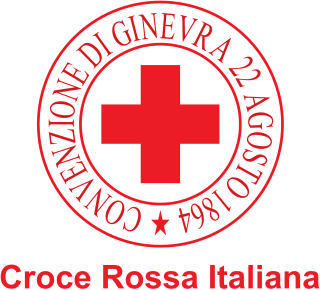
The Italian Red Cross is the Italian national Red Cross society. The Italian Red Cross was one of the original founding members of the International Committee of the Red Cross in 1919.

Under the Geneva Conventions, the emblems of the International Red Cross and Red Crescent Movement are to be worn by all medical and humanitarian personnel and also displayed on their vehicles and buildings while they are in an active warzone, and all military forces operating in an active warzone must not attack entities displaying these emblems. The International Red Cross and Red Crescent Movement recognizes four protection emblems, three of which are in use: the Red Cross, the Red Crescent, the Red Lion and Sun, and the Red Crystal.

Protocol III is a 2005 amendment protocol to the Geneva Conventions relating to the Adoption of an Additional Distinctive Emblem. Under the protocol, the protective sign of the Red Crystal may be displayed by medical and religious personnel at times of war, instead of the traditional Red Cross or Red Crescent symbols. People displaying any of these protective emblems are performing a humanitarian service and must be protected by all parties to the conflict.
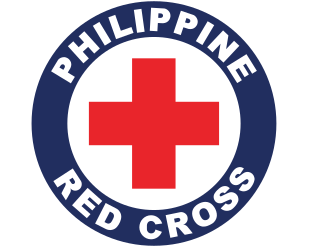
The Philippine Red Cross is a non-profit humanitarian organization and a member of the International Red Cross and Red Crescent Movement.
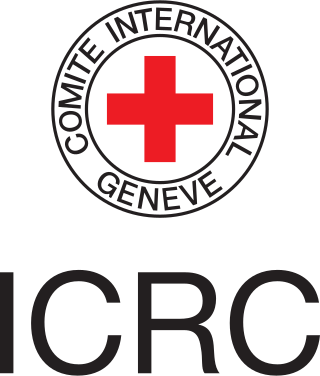
The International Committee of the Red Cross (ICRC) is a humanitarian organization based in Geneva, Switzerland, and is a three-time Nobel Prize laureate. The organization has played an instrumental role in the development of rules of war and promoting humanitarian norms.
The Ethiopian Red Cross Society (ERCS) (Amharic: የኢትዮጵያ ቀይ መስቀል ማኅበር) is a humanitarian organization working in partnership with the Ethiopian government, the International Federation of the Red Cross and Red Crescent Societie (IFRC), the International Committee of the Red Cross (ICRC), national societies, volunteers and its beneficiaries. it currently has 6.35 million fee-paying adult and youth members and more than 500, 000 volunteers.
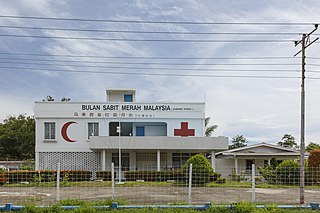
The Malaysian Red Crescent (MRC) is a voluntary humanitarian organization that seeks to promote humanitarian values, as well as provide service and public education in disaster management, as well as healthcare in the community. It is part of the International Red Cross and Red Crescent Movement.

The International Federation of Red Cross and Red Crescent Societies (IFRC) is a worldwide humanitarian aid organization that reaches 160 million people each year through its 191 member National Societies. It acts before, during and after disasters and health emergencies to meet the needs and improve the lives of vulnerable people. It does so independently and with impartiality as to nationality, race, gender, religious beliefs, class and political opinions.

Cornelio Sommaruga was a Swiss humanitarian, lawyer and diplomat who is best known for having been President of the International Committee of the Red Cross (ICRC) from 1987 to 1999. He chaired the Geneva International Centre for Humanitarian Demining (GICHD) in Geneva. He was also active on a number of boards, such as the International Union Against Cancer. He was Chair of the Board of Directors of the Foundation For the Future, an organization dedicated to promoting human rights in the Middle East and North Africa, and the honorary President of Initiatives of Change International, a global organization dedicated to "building trust across the world's divides" of culture, nationality, belief, and background.

Uganda Red Cross Society (URCS) is a humanitarian aid and community services charity in Uganda. It is a national member of the International Red Cross and Red Crescent Movement who draws mandates from the Geneva Conventions.
The Trinidad and Tobago Red Cross Society (TTRCS) was founded on 12 July 1939 as a Branch of the British Red Cross Society. It has its headquarters in Port of Spain, with branches in the North and South of the island of Trinidad and one branch on the island of Tobago. Following the attainment of independence in 1962, the TTRCS became an Independent Society by Act No. 15 of 1963. On 8 August 1963, the TTRCS became part of the International Committee of the Red Cross and the International Federation of Red Cross and Red Crescent Societies. The Constitution of the Trinidad and Tobago Red Cross Society is based on the Geneva Conventions of 1949 and their additional Protocols of 1977 and the Fundamental Principles of the Red Cross Red Crescent Movement which are:
The Red Cross Society of the Republic of China (Taiwan) (Chinese: 中華民國紅十字會), also known as Taiwanese Red Cross is the Red Cross Society of the Republic of China (Taiwan). The society is not recognized by the International Committee of the Red Cross (ICRC) because it does not meet all the conditions set out in the Statues of the Red Cross and Red Crescent Movement, and it is not a member of the International Federation of Red Cross and Red Crescent Societies. From its founding in 1904, to 1949, when the Kuomintang retreated to Taiwan, the society shared its history with the Red Cross Society of China. Both societies associate their origins with the founder, Shen Dunhe, a tea merchant.
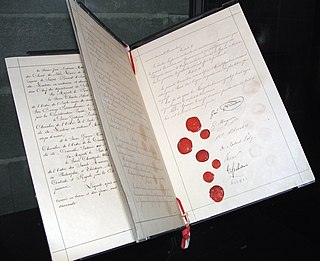
The Geneva Conventions are international humanitarian laws consisting of four treaties and three additional protocols that establish international legal standards for humanitarian treatment in war. The singular term Geneva Convention colloquially denotes the agreements of 1949, negotiated in the aftermath of the Second World War (1939–1945), which updated the terms of the two 1929 treaties and added two new conventions. The Geneva Conventions extensively define the basic rights of wartime prisoners, civilians and military personnel; establish protections for the wounded and sick; and provide protections for the civilians in and around a war-zone.

The Indian Red Cross Society (IRCS) is a voluntary humanitarian organization to protect human life and health based in India. It is part of the International Red Cross and Red Crescent Movement and shares the Fundamental Principles of the International Red Cross and Red Crescent Movement. The society's mission is to provide relief in times of disasters/emergencies and promote health and care of vulnerable people and communities. It has a network of over 700 branches throughout India. The Society uses the Red Cross as an emblem in common with other international Red Cross societies. Volunteering has been at the very heart of the Indian Red Cross Society since its inception in 1920, with the Society having Youth and Junior volunteering programmes. The Society is closely associated with St John Ambulance India.
The Maldivian Red Crescent (MRC) is an independent, volunteer, non-profit, humanitarian organization established in the Maldives by virtue of the Maldivian Red Crescent Act Law No: 7/2009
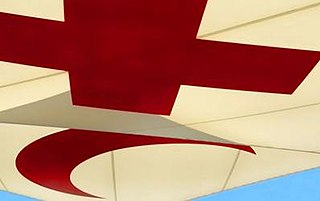
The Standing Commission of the Red Cross and Red Crescent is the permanent statutory body of the International Red Cross and Red Crescent Movement and the highest deliberative body of the Movement between the meetings of the Council of Delegates and the International Conference of the Red Cross and Red Crescent. It was originally set up to coordinate cooperation between the International Committee of the Red Cross and the International Federation of Red Cross and Red Crescent Societies.














